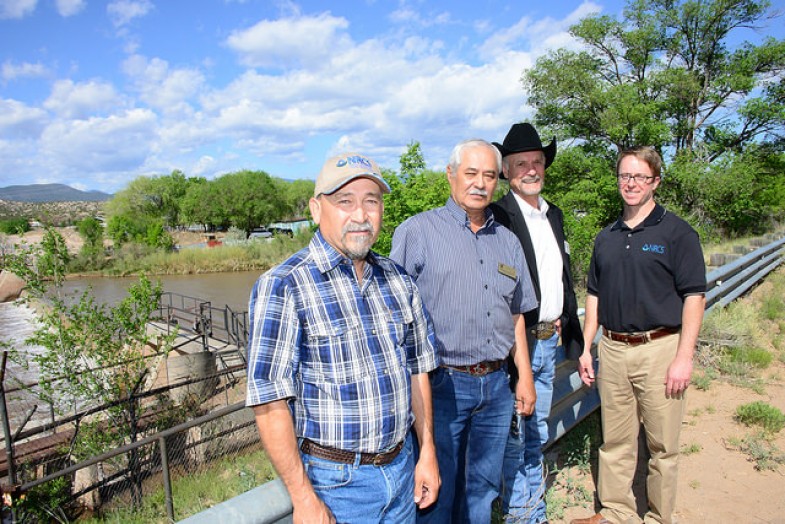In Valais in the Swiss Alps, an elaborate system of irrigation canals has existed for half a millennium. In the high-altitude Sacred Valley of the Incas, in Peru, the Quechua people have cultivated the richest diversity of potatoes anywhere on the planet since time immemorial. Since the time of Stephen the Great in the late 1400s, people in the Eastern Carpathians have managed their forests jointly through community-based institutions known as obștea, a tradition that has even survived fifty years of state dictatorship in the twentieth century. These examples demonstrate that commons are nothing if not enduring. Yet at the same time, they are highly vulnerable because nation-states claiming absolute territorial sovereignty, tend to see commons – with their focus on collective governance, use-value over exchange value, and indifference to political jurisdictions (e.g., bioregions, Internet communities) – as perplexing or threatening. For their part, global corporations commanding vast resources and legal privileges often seek to destroy commons because they are seen as an alternative regime for meeting needs and thus a threat to the hegemony of the market system.
Despite such challenges, human beings show an irrepressible impulse to work together to create, maintain and protect those relationships and things that are dear to them. The impulse is evidence of a deep need and satisfaction as well as of pride and the will to survive. The process ofcommoning — of joint action, of creating things together, of cooperating to meet shared goals – is ubiquitous. It can be seen in modern urban skyscrapers as well as in remote rural villages destroyed by earthquakes in Nepal; in artistic communities and educational and research settings; and in the community forests of India and the many self-organized communities of cyberspace.
Commoning may be a hardy social phenomenon with an ancient pedigree, but in modern industrial societies, it enjoys only modest understanding and respect. We still seem to venerate and fear those people of monetary wealth and power and dismiss people who cooperate to come up with successful solutions that can benefit everyone. The latter remain largely nameless or are even belittled as starry-eyed dreamers because they do things that do not make money. “That won’t work in the real world,” people often say dismissively, ignoring the diversity of actual commons as well as the many different caring activities (usually performed by women) that are the basis for the “real economy,” the social construct otherwise known as “the market.” This fixation with achieving all goals through market exchange is a producing a moribund global monoculture of homogenous social relationships – a culture that disdains innovative types of social interaction and collaboration (unless it can generate money). The drive to commercialize everything from genes and water to sounds and words, and to create human dependencies on proprietary technologies and their manufacturers, is fracturing our social and ecological landscape – our common spaces. Time itself and consciousness are subordinated to the elaborate systems devised to accumulate capital. The dominant market culture tends to cast individualism as the ultimate fulfillment and to denigrate collective-action solutions, whether in rural communities or peer-to-peer networks, as “impractical” or “utopian” – as if individual and collective interests were somehow mutually exclusive.
In fact, the opposite is the case. A thriving individuality is not only essential to successful commoning, as many stories of commons in this book show, it is a condition for “being commonable,” or capable of participating in a commons. Conversely, commoning contributes to strengthening and stabilizing the individual self; it nurtures identity and long-term commitments. In other words, it is not only possible to align strong individuality with strong commons; the two are necessary for each other. They generate and enhance each other. The question is not whether we can align strong individualism with strong commons, but how. And here is where Patterns of Commoning seeks to provide insight by examining some remarkable forms of commoning in the most varied places in the world.
It is customary in many social science circles – especially in economics – to equate commons with resources managed jointly. Yet commons are not things, resources or goods; they are an organic fabric of social structures and processes. They may be focused on managing a certain resource – land, water, fisheries, information or urban spaces – and those resources may have a strong influence on how governance structures and economic production occur. But excessive attention to the physical resources or knowledge that a commons relies upon can distract us from its beating heart: the consciousness of thinking, learning, and acting as a commoner.
Commoning as a Living Process
The drama of commoning is an active, living process – a verb rather than a noun. We consider it to be an aspect of the human condition, an ongoing social process that never repeats in exactly the same way . This is one reason that trying to define the commons using definitions and methodologies from the natural sciences is futile. Commoning involves so much idiosyncratic creativity, improvisation, situational choices, and dynamic evolution that it can only be understood as aliveness. It defies simple formulas or analysis. Any theoretical framework for understanding commons must therefore enter into a deep and ongoing engagement with the everyday practices and experiences of commoning. Theory and practice must be in intimate conversation with each other. They might be compared to the fluid complementarity of a musical score and orchestral performance, which exist only in relation to one another and together produce a symphony. Just as it is impossible to learn to play the violin from simply reading music, the commons (or any social phenomena) is fundamentally an experiential practice that cannot be understood through theory alone.
If the primary focus of commons is not on resources, goods and things, but on interpersonal and human/nature relationships, then institutions of any kind – business, political, civic, educational – must reliably promote three things: respect for ecological boundaries, stable community and voluntary cooperation. Many economists who consider commons to be a specific class of goods struggle to identify regularities or “laws” that supposedly govern them, with the goal of recommending appropriate institutions or policy measures. Behavioristic schools of thought in other disciplines tend to share this outlook and try to use methods taken from the natural sciences to understand social processes, systematically ignoring the importance of empathy, social relationships or culture. These traditional approaches are utterly unsuitable for understanding the social phenomena of commons, which are at their core “relational social frameworks.”
This perspective may abandon the universal regularities that conventional science aspires to identify, but it opens up a rich, empirical field of vision for devising innovative solutions to old problems. Instead of seeing “the environment” as something separate and distinct from humanity, the commons can help us realize that we are part of nature and that because of this, we destroy ourselves if we destroy nature. Instead of focusing on resources as stocks of things that a price mechanism transfers among people, we can focus on complex flows of resources that are accessed and used according to the rules made by commoners themselves. Instead of looking to impersonal market transactions as the only way to meet needs, we can see that commoning is a practical alternative that can emancipate people from the pathologies of market culture and its logic.
There is no convincing reason to assume that the commons can work only within small networks or face-to-face communities, and not at societal or transnational levels. We have already seen that the rapid scaleability of network-based institutions across the globe (free and open source programming communities and Wikipedia, among countless others), and institutions to support location-specific commoning (of fisheries or permaculture, for example), are not far-fetched ideas.
This book initially deals with another important strand in the commons narrative: the personal and social dynamics of concrete practices, values, rituals, traditions and experiences, all of which generate meaning and identity for people. A commons can survive only if it can nourish and protect this deeper level of commoning, because it is what makes a commons enduring, flexible and resilient. This is why policymakers and “experts” cannot simply design and build commons, let alone institutionalize them in a cookie-cutter way. Commoners must do this work themselves (although not necessarily alone and without support). The outcomes will reflect their particular history, geography and culture.
In this volume, we will not be able to explore the theoretical significance of diverse forces that shape commons, whether they be intentional communities or P2P networks, but we do wish to show how important the inner social dimensions of commoning are. These include a sense of shared purpose, congruent talents and interests, common experiences in a given locality, simple affection, and simple necessity. The range of commons described suggests that there are few parts of life or production that could not be structured to work as a commons.
In a book that we published in 2012, The Wealth of the Commons: A World Beyond Market and State, we offered a panorama of perspectives on commons around the world, the enclosures that threaten many of them, and the productive forces that they can unleash. In this book, the second of a planned trilogy, we wish to probe more deeply into the internal dynamics of commons, in contrast to standard economics. In so doing, we reject the standard economic repertoire of analytical constructs and categories based on an idealized fiction of homo economicus. We human beings are more than “rational” economic agents and maximizers of individual utility. It is not widely appreciated that the archetype of homo economicus, mostly thought of as a male, and significantly, as an isolated individual, is still considered an ideal, even though it has nothing to say about our common humanity or our essential sociality. In addition, homo economicus is a human being without a history or personal development; it has obliterated the idea that we become what we are. It fails to recognize our need to belong to a larger society and its traditions, language, laws and so forth.
This book is based on precisely the idea that human beings do not develop and mature as isolated individuals, but only as creatures in relationship to others. “I am because we are,” as the Nguni Bantu expression “Ubuntu” puts it. It is pointless to construct an idealized abstraction as a counter-image to homo economicus because the actual realities are so myriad. Hence our desire here to explore the realities of commoning as a complex human experience, a phenomenon that is carried out by real people situated in unique places and living unique histories.
What unites the many commoners you will encounter in this book is their desire to have the freedom (and the societal conditions) to meet their needs in creative, fair, self-devised ways, without being dependent on markets or the state. This desire reflects their instinctual need and desire to work with others – an idea that is seen as abnormal in modern, market-oriented cultures where people are so often seen as utterly autonomous and “self-made” individuals. This mythology ignores the actual dependence of individuals on money and therefore on the market. The commons paradigm helps us recover some elemental human truths – that we learn to be individuals through relationships and that autonomy itself is nested within a web of relationships. Autonomy can only be learned and lived through relationships, and commons provide an appropriate framework for this to happen.
Of course, individual endowments and personalities do not disappear in webs of relationships, but it is important to note that they do originate in social and cultural contexts, in real physical spaces, and the time/world concepts that frame our social existence. Our personal skills, outlooks, language and identities emerge and develop only through participation in larger collectives. Happiness research has elicited the insight that when people imagine a good life, they do not imagine themselves as calculating individuals constantly seeking to maximize their own utility at the expense of others. They see happiness as a social state of grace.
It should be no surprise, then, that our sense of identity and ethics arise only from our engagement with larger networks of relationships. Our morality does not fall from the sky, nor can it simply be announced and promoted. Ethical values emerge through our interactions. When children begin to grow beyond egocentrism and understand the perspectives of others, they begin to develop ideas of right and wrong. Similarly, scientists regard sharing food and lending aid to a neighbor as contributing to evolutionary success. Experiencing such humanity ultimately contributes to developing a morality that honors socially constructive attitudes and behaviors. It is not a stretch to conjecture that, through a commons, we can find the means to reinvigorate a vibrant, functional social ethics – something that the nation-state and market culture have been singularly unable to achieve.
Patterns of Commoning is an attempt to show that these dynamics are not some historical curiosity from medieval times, but a robust contemporary reality. More than a sampler of eclectic, interesting instances of commons – which, incidentally, stand on their own and can be read and reflected as separate essays – this book seeks to depict patterns of commoning. Our approach is inspired in part by the work of the architect, urbanist and philosopher Christopher Alexander, whose 1977 book A Pattern Language sought to identify the attributes of buildings and architectural spaces that have an “aliveness” to them – a theme he developed further in his 2005 book The Nature of Order. Alexander was searching for a quality that was elusive and still without a name, but which he attempted to describe using words such as “vitality” and “wholeness” and “eternal” to point to the essence he had in mind. He developed pattern languages as a tool to understand and solve complex problems, and as a heuristic for expressing not simply the principles of design, but the artful relationships among the individual elements of the whole that mysteriously generate a sense of aliveness.
This rigorous yet open-ended focus on relationships inspired us to apply the pattern approach to the commons. The commons, too, is about complex, living systems and how they emerge and grow. Just as a footpath may emerge over time because it serves the interests of thousands of walkers, so a commons may emerge, and persist, because its specific “social morphology” is pleasing and effective for participating commoners. In a commons, a biophysical resource – a forest, a body of water, an energy source, emotional energy, labor, knowledge – becomes co-mingled with social practice and diverse forms of institutionalization, producing a single, integrated system that must be considered as a whole. Patterns help us to identify similarities among diverse commons without homogenizing or over-simplifying them. Patterns of commoning help us avoid analytic frameworks that are generally too rigid, reductionist, totalizing or alienated from the messy dynamics of life. Of course, we are taking only a first step in this book to delineate patterns of commoning. We hope that this rudimentary effort will initiate the development of a richer pattern language of commoning and the commons
The Commons as a Different Worldview
Commoning is a radical concept because it insists upon the active, knowing participation of people in shaping their own lives and meeting their own needs. A commons is not just about allocating a common-pool resource, something that a computer algorithm could arguably achieve. A commons requires active, ongoing participation with others in implementing and maintaining a shared purpose. Just as market culture makes and shapes specific ways of being, so does commoning. Thinking in categories of commons and generating action from that thinking (and vice versa) helps to develop personal capacities and competencies that are essential to a happy, flourishing, creative life. A person’s intentionality and affective, emotional labor matters. All this cannot simply be designed into an organization or a procedure through legal or administrative means.
In other words, commoning is a form and process that flows through us, similar to “calculative thinking” (K.H. Brodbeck). Through countless acts of commoning, we develop essential capacities and competencies that self-replicate and spread throughout an entire collective. The resulting culture becomes a kind of emotional and cognitive “air that we breathe” – a way of perceiving and experiencing the world that flow through us and is taken for granted. Until such time as the culture of the commons becomes a richer collective reality, the language of the commons is a valuable tool for helping us to (re)discover this different ways of being, knowing and doing. It helps us become self-aware of commoning as a learned practice that is simultaneously as old and as modern as making music.
The fact that commons are timeless raises profound questions about many premises of modern civilization. It is worth quoting Étienne Le Roy in his essay “How I Have Been Conducting Research on the Commons for Thirty Years Without Knowing It.” He writes that once you begin to take the commons seriously, “the whole edifice on which modern Western civilization is based, previously believed to be well-founded, collapses onto itself: the state, the law, the market, the nation, work, contracts, debts, giving, the juristic person, private property, as well as institutions such as kinship, marital law and the law of succession, is suddenly called into question.”
For example, the commons calls into question the idea that discrete individuals and objects are the self-evident, privileged categories of analysis. We need a procedure that systematically takes “more than one” into account. Methodological individualism is unable to sustain this, as is the already criticized thinking in either/or patterns or the whole symbolic apparatus of mainstream economic thinking, which derives from the Newtonian worldview and its linear paths of causality and supposed regularities. Significantly, “the economy” is seen as an objective machine that somehow stands above us and apart from our combined actions and consciousness. As if human beings did not exist.
Set against the powerful global dominion of the market and nation-state, which are conceived of as abstract entities (and which are by no means as old as is commonly assumed), it is tempting to see any single commons as an insignificant mote. Yet acts of commoning, by connecting us with the deeper circuits of living systems and with other commoners, have their own inexorable power, especially when those circuits begin to interconnect and expand, as they are doing now.
It is our hope that Patterns of Commoning will hasten this process of rediscovering commons and developing a deeper understanding of them. They are a precious platform from which to defy the stalemate and despair of our time with living, creative and durable alternatives.
This essay is a shortened version of the “Overture” in the recently published anthology Patterns of Commoning, edited by David Bollier and Silke Helfrich. The book, published in German and English, is a collection of more than 50 original essays about lively, productive commons around the world. Examples range from Indian women who manage community forests and the Spanish crowdfunding project Goteo, to alternative currencies reviving poor neighborhoods in Kenya and high-tech Fab Labs using global peer design to reinvent local manufacturing.
This essay and the entire book are licensed under a Creative Commons Attribution-ShareAlike 4.0 International license.






